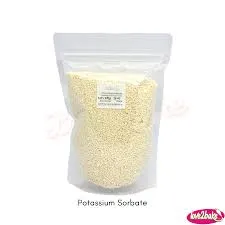
styrene butadiene rubber
Styrene-Butadiene Rubber An Overview
Styrene-butadiene rubber (SBR) is a synthetic rubber widely used in tire manufacturing, various rubber products, and numerous industrial applications. Developed in the 1930s, SBR combines the properties of styrene and butadiene to create a versatile material that exhibits excellent resilience, durability, and heat resistance. This article will explore the composition, properties, applications, and future prospects of styrene-butadiene rubber.
Composition and Production
Styrene-butadiene rubber is produced through anionic polymerization, where styrene and butadiene monomers are combined in a controlled environment. The typical ratio of styrene to butadiene can vary, which allows manufacturers to tailor the properties of the final product to specific requirements. The SBR production process often involves emulsion polymerization, where water is utilized as a medium, or solution polymerization, which involves organic solvents.
The combination of styrene and butadiene provides SBR with unique characteristics. Styrene contributes to the rubber's strength, stability, and resistance to aging, while butadiene imparts flexibility and resilience. The balance achieved through the mixing of these two components makes SBR one of the most widely used synthetic rubbers globally.
Properties of SBR
SBR offers a wide range of beneficial properties, making it ideal for diverse applications. Here are some key characteristics
1. Elasticity SBR boasts excellent elastic properties, allowing materials made from it to return to their original form after stretching or deformation.
2. Durability This rubber type exhibits good wear and tear resistance, enabling it to withstand rigorous environmental conditions.
3. Temperature Resistance SBR maintains stability over a wide temperature range, making it suitable for both low and high-temperature applications.
4. Adhesion The surface of SBR is favorable for tire tread and other material adhesion, enhancing performance in practical applications.
styrene butadiene rubber

5. Cost-effectiveness Compared to natural rubber, SBR is often more affordable while still delivering high performance, making it a popular choice in the manufacturing industry.
However, it is essential to note that SBR does have some limitations. For instance, it does not perform as well as natural rubber in certain scenarios, particularly in terms of tear resistance and weathering properties. Consequently, it is often blended with other materials to enhance its performance.
Applications of SBR
SBR finds its most significant application in the tire industry, where it is used in making tire treads, sidewalls, and inner linings. The combination of durability, heat resistance, and traction properties makes SBR essential for producing high-performance tires suitable for various vehicles, including cars, trucks, and motorcycles.
Beyond tires, SBR is utilized in the production of adhesives, sealants, footwear, gaskets, conveyor belts, and other industrial goods. Its versatility allows manufacturers to customize SBR formulations to meet specific performance criteria based on their targeted applications. Additional sectors benefiting from SBR include automotive, construction, and consumer goods, underscoring its relevance in modern manufacturing.
Future Prospects
The demand for styrene-butadiene rubber is expected to grow due to an increasing need for durable and multifunctional materials in various industries. Innovations in SBR production methods, such as the development of more sustainable practices and the use of bio-based feedstocks, are also likely to emerge. Sustainability in materials science is becoming paramount, and SBR producers will need to explore eco-friendly alternatives and recycle used rubber to minimize environmental impact.
Moreover, advancements in technology and engineering may lead to the creation of new SBR compounds with enhanced properties, opening up new possibilities for high-performance applications.
Conclusion
Styrene-butadiene rubber remains a crucial material in various industries, particularly the automotive sector. Its unique combination of properties, versatility, and cost-effectiveness has cemented its position as a widely used synthetic rubber. As the industry continues to evolve, SBR will likely adopt innovative solutions to meet changing consumer demands and sustainability standards. The future of styrene-butadiene rubber looks promising, making it a focal point for research, development, and application in the coming years.
-
Why Glacial Acetic Acid Food Grade Is Essential in FlavorNewsMay.26,2025
-
Surging Export Growth of Food Additives in ChinaNewsMay.26,2025
-
How Ammonium Nitrate Fertilizer Boosts Crop YieldsNewsMay.26,2025
-
How 1,2,3-Benzotriazole Shields Plastics from UV DegradationNewsMay.26,2025
-
Cyanide in Gold Mining: Protecting People and the PlanetNewsMay.26,2025
-
Aluminum Hydroxide in Modern Sunscreen FormulationsNewsMay.26,2025
-
Understanding Synthetic Rubber OptionsNewsApr.27,2025
Hebei Tenger Chemical Technology Co., Ltd. focuses on the chemical industry and is committed to the export service of chemical raw materials.
-

view more DiethanolisopropanolamineIn the ever-growing field of chemical solutions, diethanolisopropanolamine (DEIPA) stands out as a versatile and important compound. Due to its unique chemical structure and properties, DEIPA is of interest to various industries including construction, personal care, and agriculture. -

view more TriisopropanolamineTriisopropanolamine (TIPA) alkanol amine substance, is a kind of alcohol amine compound with amino and alcohol hydroxyl, and because of its molecules contains both amino and hydroxyl. -

view more Tetramethyl Thiuram DisulfideTetramethyl thiuram disulfide, also known as TMTD, is a white to light-yellow powder with a distinct sulfur-like odor. It is soluble in organic solvents such as benzene, acetone, and ethyl acetate, making it highly versatile for use in different formulations. TMTD is known for its excellent vulcanization acceleration properties, which makes it a key ingredient in the production of rubber products. Additionally, it acts as an effective fungicide and bactericide, making it valuable in agricultural applications. Its high purity and stability ensure consistent performance, making it a preferred choice for manufacturers across various industries.











